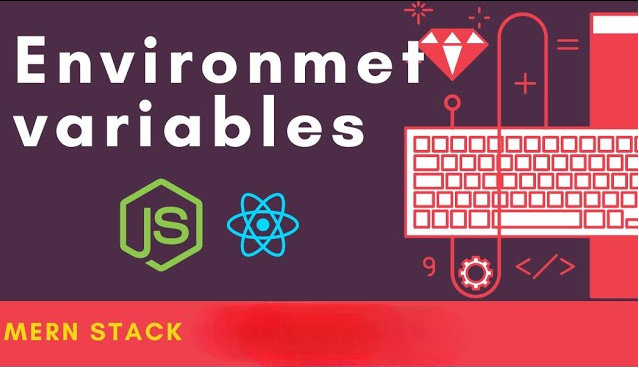Introduction
Environment variables play a crucial role in configuring MERN stack applications, allowing developers to manage sensitive data and environment-specific settings securely. These variables store information like database URIs, API keys, and server ports, keeping such details separate from the codebase. By leveraging tools like .env files and the dotenv package, environment variables streamline application development and deployment. One can join the MERN Stack Course Online for more information. This guide explains how to set up and use environment variables effectively in a MERN stack application to ensure security and scalability.
What Are Environment Variables In A MERN Stack Application?
Environment variables in a MERN stack application are key-value pairs used to configure application settings without hardcoding sensitive or environment-specific information directly into the codebase. These variables are crucial for managing configurations that vary across different environments, such as development, testing, and production.
Purpose
Environment variables store sensitive data like:
- Database connection strings (e.g., MongoDB URI).
- API keys (e.g., for third-party services).
- Server configurations (e.g., port numbers).
- Secrets for encryption or authentication.
Implementation
In the MERN stack, you typically use the .env file to define environment variables. This file is located at the root of your project and uses the following format:
“PORT=5000
MONGO_URI=mongodb+srv://username:password@cluster.mongodb.net/dbname
JWT_SECRET=mysecretkey”
Accessing Variables
Backend (Node.js with Express): Use the dotenv package to load variables into process.env:
“require(‘dotenv’).config();
const port = process.env.PORT || 5000;”
Frontend (React): Prefix variables with REACT_APP_ to expose them:
“const apiUrl = process.env.REACT_APP_API_URL;”
Security
Never expose sensitive variables to the frontend unless necessary.
Exclude the .env file from version control by adding it to .gitignore.
Environment variables streamline application configuration, improve security, and enhance maintainability by separating code from its environment-specific settings.
How To Set Up Environment Variables In A MERN Stack Application?
Setting up environment variables in a MERN stack application is essential for securely managing environment-specific configurations like API keys, database connections, and server ports. For the best guidance about the environment variables, you can join MERN Stack Developer Certification course.
Here’s a step-by-step guide:
1. Install dotenv (for the backend)
The dotenv package is used in Node.js to load environment variables from a .env file into process.env.
“npm install dotenv”
2. Create a .env File
At the root of your project (where package.json resides), create a .env file.
“PORT=5000
MONGO_URI=mongodb+srv://username:password@cluster.mongodb.net/dbname
JWT_SECRET=your_secret_key”
3. Configure the Backend to Use dotenv
In the entry file (e.g., server.js or index.js), require dotenv at the top:
“require(‘dotenv’).config();
const express = require(‘express’);
const mongoose = require(‘mongoose’);
const app = express();
const PORT = process.env.PORT || 3000;
mongoose.connect(process.env.MONGO_URI, { useNewUrlParser: true, useUnifiedTopology: true })
.then(() => console.log(‘Database connected’))
.catch(err => console.error(err));
app.listen(PORT, () => {
console.log(`Server running on port ${PORT}`);
});”
4. Set Environment Variables for the Frontend
React applications require environment variables to start with REACT_APP_. Create a .env file in the frontend directory:
“REACT_APP_API_URL=http://localhost:5000/api
REACT_APP_ENVIRONMENT=development”
Restart the React server to apply changes.
In your React code, access the variables using process.env:
“const apiUrl = process.env.REACT_APP_API_URL;
console.log(`API URL: ${apiUrl}`);”
5. Add .env to .gitignore
To prevent sensitive data from being exposed in version control, add .env to .gitignore in both frontend and backend directories:
“# Ignore .env files
.env”
6. Use Default Values as a Fallback
To ensure your application doesn’t break if a variable is missing, provide defaults:
“const PORT = process.env.PORT || 3000;”
7. Environment Variables in Production
In production, set environment variables directly on the server using tools like AWS Elastic Beanstalk, Heroku, or Docker. For example, on Heroku:
“heroku config:set MONGO_URI=<your_mongo_uri>”
This setup ensures your MERN application is secure, scalable, and adaptable across environments, keeping sensitive data out of the codebase. Additionally, always verify configurations before deploying. The MERN Stack Course Syllabus includes extensive sessions on environment variables in MERN. This helps aspiring professionals learn the basic skills better.
Conclusion
Setting up environment variables in a MERN stack application enhances security, scalability, and maintainability by keeping sensitive data like API keys and database credentials out of the codebase. By using .env files, the dotenv package, and proper frontend and backend configurations, you ensure smooth deployment across environments. Always secure .env files by adding them to .gitignore and set variables directly in production environments for maximum protection and efficiency.
Also Read
- ► Conor Dowers: Celebrating the Life and Legacy of a Remarkable Talent
- ► A Comprehensive Overview of the Sharda University Admission Process
- ► Unveiling the Unique Design of the Sp5der Hoodie
- ► What Makes Pull Ami Paris Stand Out in the Streetwear Market
- ► Obtainability of Custom Boxes at Reasonable Price
- ► Travis Scott Merch Styling Tips: How to Rock the Look Like a Pro
- ► What is Osteopathy: A Comprehensive Guide to Understanding this Holistic Healthcare Approach
- ► Cash for Junk Cars Calgary – Cars for Cash
- ► How to Install polycarbonate roofing
- ► Discover the Best Cafe in Dubai for Your Next Coffee Fix
- ► Top Audit Firms in UAE: Your Partner for Financial Success and Growth
- ► How Can a Credit Card Settlement Agency Reduce Your Debt Faster?
- ► How Can You Improve Your Credit with Settlement Services?
- ► Friendship and cooperation shine in this children’s story
- ► Building World-Class iOS Apps in Dubai: A Step-by-Step Guide for Startups





